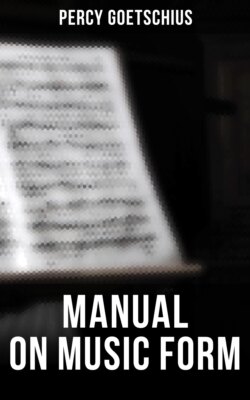Читать книгу Manual on Music Form - Percy Goetschius - Страница 15
На сайте Литреса книга снята с продажи.
CHAPTER III. FIGURE AND MOTIVE.
ОглавлениеTable of Contents
THE MELODIC FIGURE.—The smallest unit in musical composition is the single tone. The smallest cluster of successive tones (from two to four or five in number) that will convey a definite musical impression, as miniature musical idea, is called a Figure. Assuming the single tone to represent the same unit of expression as a letter of the alphabet, the melodic figure would be defined as the equivalent of a complete (small) word;—pursuing the comparison further, a series of figures constitutes the melodic Motive, equivalent to the smallest group of words (a subject with its article and adjective, for example); and two or three motives make a Phrase, equivalent to the complete, though comparatively brief, sentence (subject, predicate, and object). This definition, amply illustrated in the following examples, serves also to point out the significant resemblance between the structure of language and of music. The principal melody is, as it were, the voice of the speaker, whose message is framed wholly out of the primary tones, or letters of the musical alphabet. The association of primary tone-units, in successive order, results first in the figure, then in the motive, then the phrase, period, and so forth, in the manner of natural growth, till the narrative is ended. The following example, though extending beyond our present point of observation, is given as an illustration of this accumulative process (up to the so-called Period):—
